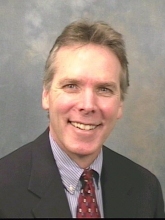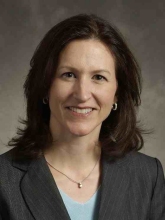November 2012
Tom Heintjes: Welcome to the Federal Reserve Bank of Atlanta's Financial Update Focus podcast. We are talking today with Cheryl Venable, senior vice president and product manager in the Fed's Retail Payments Office, and Jim McKee, senior vice president responsible for strategic planning and general administration in the Retail Payments Office.
We will discuss the Fed's new Financial Services Strategic Plan for 2012 through 2016, which is a framework for our work with the payments industry to further improve the speed, safety and efficiency of payments. That work includes numerous technology upgrades in response to the ever-changing payments environment.
Cheryl and Jim, thanks for joining us today.

Cheryl Venable: Thank you for inviting us.
Heintjes: Jim, let's start by discussing the Fed's fundamental role in keeping the nation's payment systems efficient and current. Why are we concerned with this, and why is it important to the nation's economy?
McKee: Well, if you think about what banking is and what payments are, the first thing that comes to mind generally is going to be "trust." The Federal Reserve is always going to take a position when it comes to its role as making sure that we are going to be a trusted party in anything that we do, and the payments process is something that is one of our fundamental responsibilities. Because of wanting to be a high-integrity organization that provides those types of services, payments is one of those areas where we want to make sure that it is going to be accessible to all, whether it be a consumer or a business or banking, that we want to make it efficient so that it doesn't cost an arm and a leg, no matter who you are, and you can have the ability to make payments in a reasonable way, and that it is going to be safe, especially as we get more and more electronics. The questions about, "Is my data safe? Is my payment going to be safe?" Those are growing concerns. So we want to make sure that that accessibility is there, the efficiency is there, and it's a safe and high-integrity process, whether it's banks, consumers, or corporates.
Heintjes: Cheryl, would you like to expand on that?

Heintjes: Cheryl, the focus of innovation in payments has shifted to the end-users of the payment system, where before it had been centered among the banks and infrastructure providers. How does this shift change things for the Fed, and how will we influence the end-user-to-bank relationship?
Venable: So if we think about what has changed over the past decade as it relates to payments, innovation is occurring around how payments are being initiated and how they are being received, and those are being influenced by technology that is out in the industry, that new entrance, say "non-traditional," payment providers like the Paypals and the Googles that are leveraging technology to influence how end-users are originating payments. And they are meeting these new end-user needs and addressing paying points that they have. So that is clearly broadened our perspective of what the Federal Reserve should be focused on as it relates to our strategic plan.
So prior, as you have noted, in the past decade or more we very much focused on, "How do we make the inter-bank clearing and settlement space more efficient?" Now we want to broaden our view to look at it end-to-end because that is where the innovation is occurring, and many of those payment systems—the innovations that are happening on that origination side—are still leveraging what we call "legacy clearing and settlement systems," so the ACH, the checks, the card networks. They are still leveraging those legacy systems where we are a provider of some of those services. So we have to look forward to kind of figure out what do we need to do to augment or enhance our legacy systems to support these innovations that are occurring.
Heintjes: Jim, would you like to follow-up on that?
McKee: If you think about technology, which always has a tendency to be way out ahead of the banking industry, certainly regulation, how do you use that technology for the benefit of all in the payment stream? And to Cheryl's points, the end-user process has technology built into it. If different form-factors—and when I say that I mean like a mobile phone—are going to be used to initiate payments, everyone has a mobile phone and so consumers, and businesses, and so forth will be using those. And so, how is that going to change how banks work in that process? How is that going to change how the Fed offers services, for example, for the banks?
And I think one of the things that is always going to be there is the settlement of the transaction, no matter how it is initiated. You still have to settle that transaction, and usually that is going to involve a bank, and usually a bank account is going to be tied in to the Fed. So we are involved; it's just that it is going to be high-tech how payments are going to be made, whether you are a business or whether you are a consumer. And we can see that today as that is changing. I think we are going to be learning a lot. I think we are going to be doing research to try to make sure that we are doing the right things for the banking industry. Remember we want to keep accessibility, integrity, safety, and all those things in the payment space. So we are going to be very much in the thick of things, whether we are offering the service or not.
Heintjes: Jim, the Fed has played a role in helping the payment system evolve. Can you talk about that history?
McKee: Well Tom, since I have been here 100 years I guess I can remember some of this very vividly. Thinking about years ago before the Fed even existed there were always problems in the payment space because banks were issuing their own currency, and drafts and checks were collected and banks would put additional fees on those checks so they weren't collected at par. So on a $100 check, you may only get $90 in return. So those types of issues, as well as a variety of other things, led to a need for a number of standard currency issues and other types of payment issues, and that is one of the main reasons the Fed was established.
So once it was established, collecting checks at par across the country was a very big deal, and so the Fed got involved in that business of check collection, because we had Fed offices all through the country. The United States had the twelve Fed districts and various branches and so forth over time. And so we had the check-processing operations, but we also put in the transportation and other things to help facilitate that. So over the years as that emerged we became very much players in the retail payments space, and that led to other things, such as wire-transfer for wholesale for the large-value payments, that was very much a Fed function as well that was done electronically when that capability came about.
And then the ACH itself, when it was established back in the 1970s, it was actually a check replacement system that was put in place. But the reason the Fed got involved in it—obviously working with the industry—is because we had the transportation, because we were delivering checks. But at the time that ACH started, it was on magnetic tapes, those big tape reels that you'll recall, and you had to physically deliver those. So we had the system so we just put those tapes in with the check bags and delivered them on trucks and in airplanes, and we got very much involved in ACH as it developed. So today we are very much a player in the retail payments space, the wholesale payments space, and certainly for the Treasury in the distribution of cash in the cash space.
Heintjes: Cheryl, what are the major payments technology transformations under way within the Fed System? Why are they happening, and what's most important for the public to know about them?
Venable: We do have a number of technology modernization efforts underway across the Federal Reserve System around all of our major payment systems. So, for example, we are modernizing our Fedwire funds and securities applications, we are modernizing our technology that provides and processes ACH payments, and we are just now completing a large modernization for our check processing system. Each of those has a slightly different reason of why they were originally initiated, but it probably boils down to two things.
The first one is to become more efficient in the services that we provide. For example, in the case of our check modernization it is allowing once implemented for us to take out millions of dollars within our infrastructure in both technology and some staffing infrastructure in support of the remaining check processing that we have left. As it relates to ACH and wires and securities, probably the primary reason why we are modernizing those applications is to provide for more flexibility, making our systems more adaptable to innovations and new products and new services that are going to need to come about as a result of the innovation that we talked about earlier.
So those are the two primary reasons why we are doing much of this innovation, and I think it is important for the public to understand that we know we need to keep current and we are doing that in response to and in anticipation of the changes that are going on. And that we are engaged with the industry to understand what those changes are and the changes that we are making are an attempt to, again, go back to that core mission that we talked about earlier of the Federal Reserve and why we are payment systems is to provide systems with high integrity, have efficient processing in systems, and then also to ensure that our systems are safe.
Heintjes: Cheryl and Jim, this has been a really interesting conversation. Thanks for joining us today.
McKee: Our pleasure; enjoyed it.
Venable: Thank you.
Heintjes: Again, we've been speaking with Cheryl Venable, head of the Federal Reserve System's Retail Payments Office, and Jim McKee, senior vice president in the RPO. For more information, please see Financial Update on the Atlanta Fed website at frbatlanta.org.
Thanks for listening to Financial Update Focus, and please return for more podcasts. If you have comments, please send us e-mail at podcast@frbatlanta.org.


